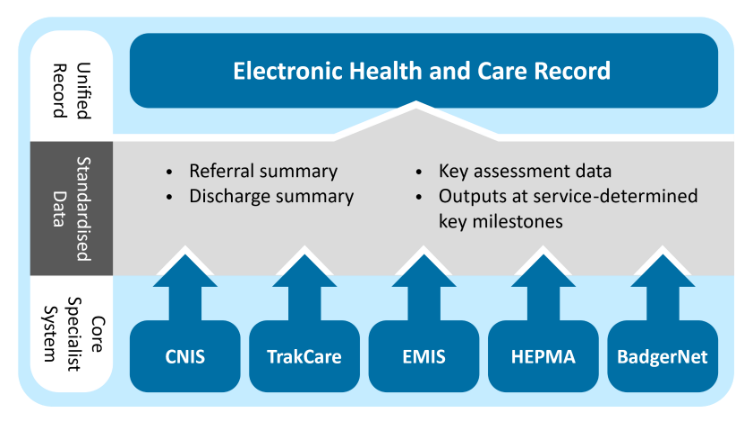There are opportunities to fully integrate the digital health & care record by implementing a Unified Care Record.
Beginning in 2023, NHSGGC will roll out the new GP clinical system across GP practices. Procured via the new national framework, the modernised cloud-hosted GP clinical system will support the delivery of the GMS contract and the Primary Care Improvement Plan, and will provide benefits in terms of patient safety, data availability, and the wider Digital Health and Care record.
We are working with health and social care staff to enable them to fully utilise the wealth of information available within Clinical Portal. We have created a training package specifically for social care staff which includes information on the benefits, current data available and how to access support.
We will continue to expand the available information, widen access, and further improve the user interface to deliver additional benefits and support care providers and citizens across health and social care. For example, we have included vaccination records in response to the COVID-19 pandemic and expanded access to include additional professional groups such as Ambulance services.
Dental services will transition to the DHCR including lab tracking capabilities and dental charting. The “Open Eyes” system will be used across Scotland to enable sharing across Acute Ophthalmology and Community Optometry services, reducing duplication and aiding shared care.

The introduction of a unified care record will provide technology which sits over clinical systems and extends the user’s view to include data from all health and care organisations and Boards involved in a citizen’s care.
This technology will help deliver benefits including:
- Aggregated data views
- Automated alerts and notifications for identified clinicians and care providers
- Enhanced analytics
- Greater collaboration between clinicians, carers and the citizen
- The ability to order and refer between NHS Boards and services
- Greater support for patient pathways and clinical workflows
This will provide a problem-oriented and timeline-based view of encounters, enabling the removal of remaining in-patient paper documentation and making structured data more accessible and usable. As we develop this functionality, we will focus on the reuse of data to reduce the need for the same information to be provided and recorded multiple times during the care journey.
Active Clinical Notes functionality will replace traditional clinical notes, providing a central workspace for digital note taking and initiating clinical activities such as patient-centred care planning and e-Observations within hospital settings and including oral health.
Clinical Portal will continue to be improved by upgrading the system to deliver a more intuitive and configurable user interface, extending the portal data set, and extending usage to new areas including NHS24 and the Ambulance service.
Our focus will be on introducing integrated workflows between health and social care, allowing patients’ care to pass seamlessly across systems, and exploiting technology to support staff in delivering care closer to home through developments such as mobile phlebotomy.


